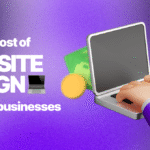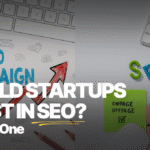- Lumos Marketing 💡
- Blog
- 12 Actionable Ways to Make Your Business Stand Out From the Crowd
12 Actionable Ways to Make Your Business Stand Out From the Crowd
- Lumos Marketing
- September 1, 2025
-
- 0






Behind every small business is someone working late, trying hard, and wondering why it still feels invisible.
The truth is that helping your business stand out from the crowd doesn’t require magic: it takes clarity.
From defining your unique niche to leveraging authentic storytelling, these proven methods will transform how prospects see your business and help you command premium pricing while building lasting customer relationships.
Keep reading for 12 battle-tested strategies that will help you cut through the noise and build a business that customers remember, trust, and choose over your competitors.
1. Define a Clear Brand Identity
Your brand identity is your business’s personality made visible. It’s what customers remember and what drives their purchasing decisions.
Craft a Memorable Logo and Tone of Voice
Your logo isn’t decoration, it’s your visual anchor. Research shows that consistent brand presentation across all platforms can increase revenue by up to 23% (Lucidpress Brand Consistency Report).
Take Nike’s swoosh or Apple’s bitten apple, instantly recognisable symbols that work everywhere.
Your tone of voice is equally crucial. Are you professional and authoritative, or friendly and approachable? This consistency should be evident in every customer touchpoint.
Stay Consistent Across All Platforms to stand out.
Every customer interaction should feel cohesive. Whether they visit your website, read your LinkedIn posts, or receive your emails, the experience should consistently reflect your brand; that’s how your business stands out from the crowd.”
Create a simple brand style guide with your logo usage, colours, fonts, and key messaging. Share this with anyone creating content for your business.
If you’re serious about growth, explore how our marketing services can help you attract, convert, and retain more customers.
2. Find and Focus on Your Niche
In a marketplace of 33.2 million small businesses. Every business is working on some kind of problem. Those problems become their niche.
Solve a Specific Problem Better Than Anyone Else
Instead of offering generic solutions, identify a particular pain point and become the go-to expert.
For instance, instead of being “a marketing consultant,” position yourself as “the marketing consultant who helps B2B SaaS companies increase trial-to-paid conversion rates by 40%.”
This specific positioning makes you instantly memorable and referable.
Position Yourself as the Go-To Expert
Expertise positioning requires consistent demonstration of deep knowledge. Create content showcasing your understanding of industry trends, speak at events, and participate in relevant communities.
Building expert status takes time, but once established, it becomes a competitive advantage that’s difficult to replicate.
3. Know and Understand Your Target Audience to make your business stand out from the crowd
Understanding your audience means diving deep into their motivations, fears, and decision-making processes. So, without understanding your Actual Target Market audience, you won’t grow at all, even if you work 24 hours a day.
Create Detailed Buyer Personas
Effective buyer personas include daily challenges, information consumption habits, and decision-making processes. Where do they seek advice? What keeps them awake at night?
Interview your best customers about their journey from awareness of the problem to making a purchase. It will give you a clear idea of how to stand out from the crowd.
What convinced them to choose you? These insights reveal messaging strategies that resonate.
Address Their Emotions, Needs, and Pain Points
People buy based on emotion and justify with logic.
If you’re selling accounting services, you’re not just selling tax preparation; you’re selling peace of mind, relief from IRS penalty fears, and confidence in professional financial management.
Create messaging that acknowledges emotional states while providing logical justification.
4. Build Strong Relationships (Customers & Press)
Relationships fuel small business success and help your business stand out from the crowd.
Strong customer connections lead to loyalty and referrals, while solid media relationships expand your reach far beyond paid ads.
Connect with Journalists and Media
Research journalists covering your industry. Engage with their content on social media before pitching stories.
When you pitch, focus on newsworthy trends and insights rather than company promotion.
Position yourself as a valuable expert source, not someone seeking free advertising.
Want to build authority in your niche? Our content marketing services help you educate, engage, and convert.
Engage Regularly with Your Audience
Engagement means proactively participating where your audience spends time. Join LinkedIn groups, participate in Twitter chats, and contribute to Facebook communities.
Consistency and genuine value-add matter more than promotion. Share insights, answer questions, and contribute to discussions.
5. Use Multiple Marketing Channels
50% of businesses view marketing as their primary growth strategy (HubSpot State of Marketing Report 2024). Relying on a single channel is risky and limiting.
Combine Email, SEO, Social Media, and Local PR
Each channel serves different purposes. Email provides direct communication with engaged prospects.
SEO helps customers find you during active searches. Social media builds community. Local PR establishes credibility.
Measure Performance Across Platforms
83% of marketing leaders now prioritise demonstrating ROI.
Tracking performance across your channels, such as website conversions, email open rates, social engagement, or PR mentions, provides clarity on what’s working.
When you understand which efforts truly move the needle, you can double down and help your business stand out from the crowd without relying on guesswork.
6. Create a Distinct Brand Personality
Brand personality makes your business memorable and relatable. It’s the human characteristics customers associate with your brand.
Use Storytelling to Humanise Your Brand
Stories create emotional connections that facts cannot. Share why you started your business, challenges you’ve overcome, and customer impact stories.
Customer success stories are particularly powerful. When customers share how you improved their situation, it provides social proof while showcasing your impact.
Let Your Values Guide Your Messaging
Your values should shape every business decision and customer interaction if you want your business to stand out from the crowd.
For example, if sustainability is central to your brand, it should reflect in your product development, packaging, and supplier choices, not just your marketing.g
Authentic values-based messaging attracts customers who share similar beliefs, creating stronger relationships and often enabling premium pricing.
7. Be Authentic on Social Media
Social media authenticity builds trust and creates deeper connections. In a world of polished corporate messaging, genuine communication stands out.
Show Behind-the-Scenes Content
Behind-the-scenes content humanises your brand. Show your workspace, introduce team members, and document product development processes.
Find the right balance between professional and personal. Share content reflecting your brand personality while maintaining appropriate boundaries.
Respond Honestly and Consistently
Social media interactions are public brand experiences. Respond promptly, professionally, and authentically to all interactions.
When addressing criticism, acknowledge issues, apologise when appropriate, and move conversations offline for resolution. This demonstrates a commitment to customer service.
8. Reward Loyal Customers
Customer retention is more cost-effective than acquisition. With 58% of small businesses facing inflation challenges and 35% struggling with revenue, focusing on retention increases lifetime value while reducing acquisition costs.
Implement a Loyalty or Referral Program
Simple loyalty programs, like early access to products, exclusive discounts, or special recognition, can make a big difference in customer retention and help your business stand out from the crowd through consistent value.
Referral programs leverage satisfied customers to bring new business. Offer meaningful incentives for both referrer and new customer, making the process simple.
Spotlight Customer Success Stories
Success stories provide social proof, make customers feel valued, and create resonant content for prospects. Highlight specific challenges and concrete results achieved.
Feature these stories across all marketing channels, website, email, social media, and sales presentations.
9. Participate in Local Events and Communities
Local presence builds credibility and creates face-to-face relationship opportunities that online marketing cannot replicate.
Attend Trade Shows and Business Fairs
Trade shows provide concentrated networking opportunities. Success requires preparation and follow-up. Set clear goals, prepare engaging materials, and develop follow-up systems.
Don’t just attend, participate. Volunteer, sponsor activities, or speak on panels. This positions you as a community leader.
Sponsor or Host Community Initiatives
Community involvement demonstrates commitment beyond business interests. Sponsor local sports teams, support charity events, or host educational workshops.
Choose initiatives that align with your brand values and customer demographics.
10. Leverage Influencers and Reporters
Influencer and media relationships amplify reach and credibility beyond direct marketing capabilities.
Collaborate with Niche Influencers
Niche influencers often provide better engagement and more qualified leads than macro-influencers. Look for audience alignment and compatible content styles.
Successful collaborations provide value to influencer audiences while naturally showcasing your business.
Pitch Stories to Relevant Media Outlets
Media coverage provides third-party credibility that paid advertising cannot match. Focus on newsworthy stories providing value to publication audiences.
Pitch industry trends, unique business practices, or interesting customer stories. Position yourself as a helpful expert.
11. Share Stories That Resonate
Storytelling is one of the most powerful differentiation tools. Stories create emotional connections and help customers understand your value.
Highlight Customer Journeys
Customer journey stories are powerful tools that show how your business stands out from the crowd by solving real problems and delivering measurable results.
Share the initial challenge, the solution you provided, and the outcome achieved to build trust and credibility.
Structure stories to help prospects see themselves in similar situations. Use specific details and measurable outcomes for credibility.
Tell the “Why” Behind Your Brand
Your origin story, why you started, what drives you, and what you hope to achieve, creates an emotional connection with customers sharing similar values.
This narrative should evolve as your business grows and your understanding deepens.
12. Create Simple, Actionable, and Insightful Content
Content marketing builds authority and attracts customers, but it must provide genuine value to stand out.
Make Content That Educates and Solves Problems
The most effective content addresses specific audience problems with actionable solutions. Focus on how-to guides, industry insights, case studies, and tool recommendations.
Provide value before asking for anything in return. Focus on evergreen content supplemented with timely trend pieces.
Use Data and Trends to Back Your Claims
When your content is backed by real data, like industry stats, case studies, or reports, it not only builds trust but also gives people a clear, logical reason to choose you; that kind of credibility helps your brand stand out from the crowd.
Stay current with industry trends and data sources. This knowledge allows you to create both current and authoritative content.
Quick Reference: Marketing Channel Performance Comparison
| Marketing Channel to stand out from the crowd | Average ROI | Best Use Case | Time to Results |
|---|---|---|---|
| Email Marketing | £36-40 for every £1 | Nurturing leads and customer retention | 1-3 months |
| SEO | £2.20 for every £1 | Long-term visibility, organic traffic | 6-12 months |
| Content Marketing | £3 for every £1 | Authority building, lead generation | 3-6 months |
| Social Media | £2.50 for every £1 | Brand awareness, community building | 2-4 months |
| Local PR | Varies widely | Credibility, local awareness | 1-2 months |
| Referral Programs | £4 for every £1 | Customer acquisition, loyalty | 1-3 months |
Frequently Asked Questions
Below, we address common concerns to ease your worries and help you plan confidently, building on the insights above.
1. How long does it take to see results from implementing these strategies?
The timeline for results depends on your strategy and starting point.
If you’re aiming to make your business stand out from the crowd, brand identity changes can quickly shift customer perception. At the same time, long-term efforts like SEO and content marketing typically take 8–9 months to show substantial impact.
Businesses that consistently implement these strategies over 6-12 months typically see substantial improvements in visibility and customer engagement.
2. Which strategies should I prioritise if I have limited time and budget?
Start with brand identity and niche focus; these foundational elements influence everything else. Then, prioritise email marketing and customer retention strategies for the highest ROI with the lowest investment.
3. How do I know if my differentiation strategies are working?
Track metrics aligned with your goals:
- Brand awareness: social media mentions, website traffic
- Customer engagement: email open rates, social media engagement
- Lead generation: contact form submissions, consultation requests
- Customer retention: repeat purchase rates, referral rates
Set baseline measurements before implementing changes and review monthly.
4. What's the biggest mistake small businesses make when trying to stand out?
The biggest mistake is trying to appeal to everyone rather than focusing on specific audiences and problems. With 33.2 million small businesses competing, trying to be everything to everyone makes you nothing special to anyone.
5. How can I maintain an authentic brand personality while staying professional?
Authenticity means being genuinely human while maintaining appropriate boundaries. Share your values, admit mistakes, and let personality show through communication style.



